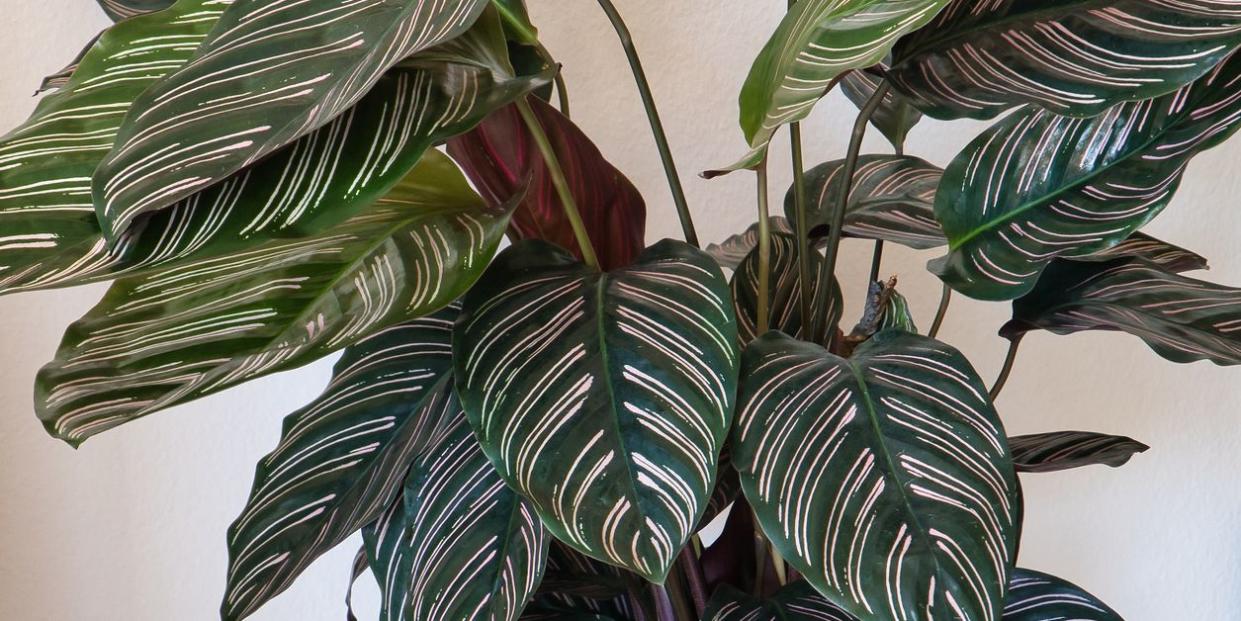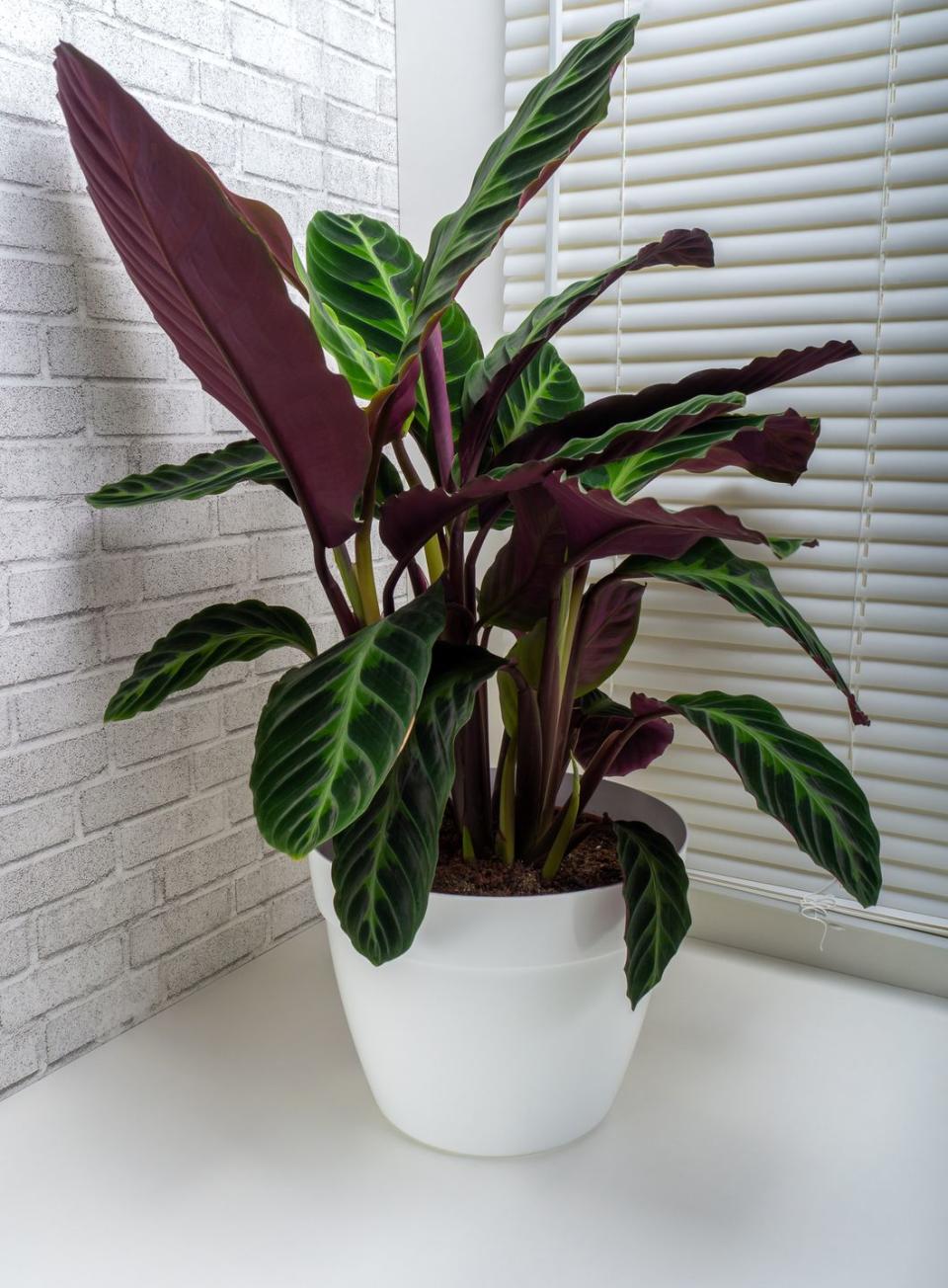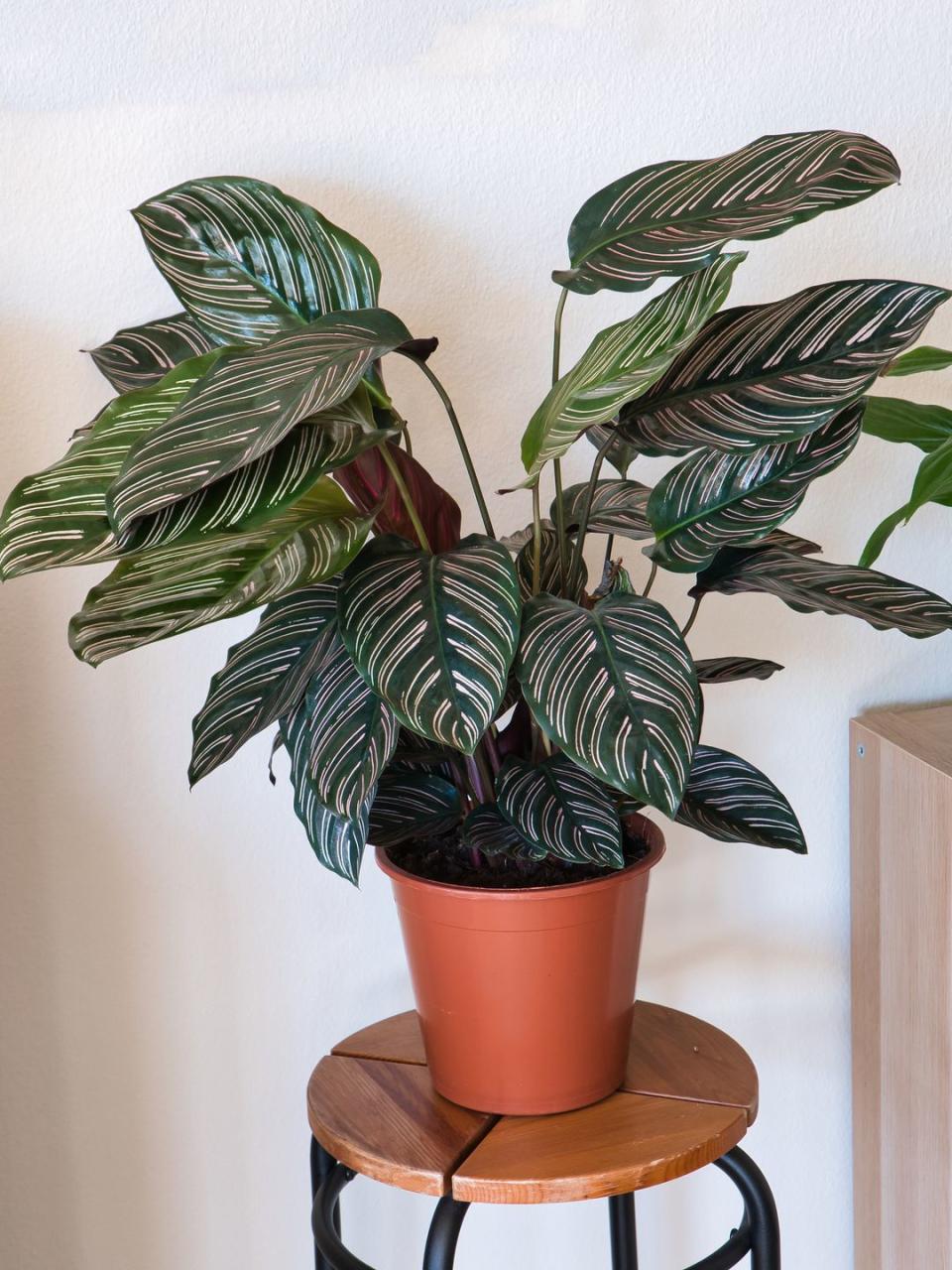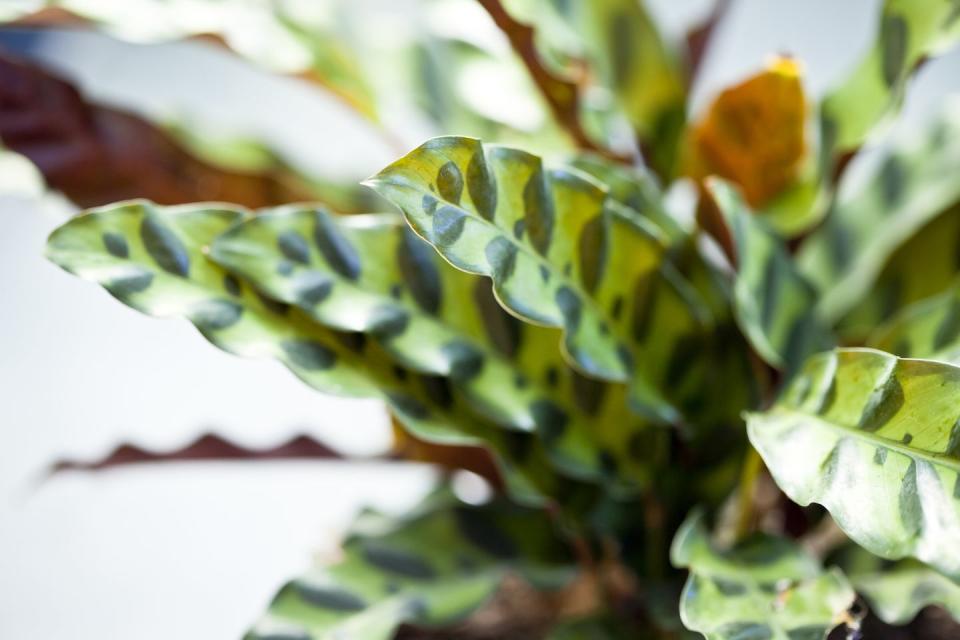How to care for the beautiful calathea plant

If you're after a houseplant that will really turn heads, calathea is the one for you. This genus of plant includes some of the most gorgeous-looking tropical plants on the planet, characterised with bold striped leaves in an array of bright colours.
Native to Brazil and also frequently found in other tropical locations such as southern Florida and Hawaii, calathea are quintessential tropical plants, and as such have gained a reputation for being difficult to care for. It's true that they can be a little fussy, but once you know how to take care of them, this plant makes a very rewarding green companion that will sprout quickly and reward you with dazzling foliage.
What is a calathea?
Calatheas are a popular family of houseplants known for their beautiful foliage (traditionally used for handicrafts and to wrap food in). There are a huge number of different kinds of this plant, with some easier to grow than others.
They're sometimes known as prayer plants because of the unique movement of their leaves. Throughout the course of the day, these plants move their leaves around in a way known as nyctinasty. It's thought that this allows calatheas to capture as many of the sun's rays as they can. You can expect the multi-coloured leaves of this plant to lift themselves up, with the leaf faces bunching together at night, and lowering themselves down during the day to receive as much light as possible.

The patterns and colours found on this plant will have you hypnotised – even the underside of the leaves are visually interesting.
These plants have a reputation for being tricky to care for, and they are sometimes called greenhouse plants for this reason. Sensitive to cold, they thrive best when kept in the warm and moist environment of their homeland. Don't be put off, however – with the right conditions, calathea can be happy in almost all homes and parts of the world.
The calathea at a glance:
Botanical name: Calathea.
Other names: Zebra plant, rattlesnake plant, peacock plant, cathedral plant, prayer plant.
Height and growth rate: Calathea has a moderately fast growth rate when the plant is happy. It can reach maturity within a year, reaching a potential height of up to two feet before stopping growing.
Light: Needs indirect light. Direct sunlight can burn the leaves of this plant.
Watering: Calathea needs to be watered regularly, and to be kept moist but not soggy.
Soil: This plant needs slightly acidic soil, with a pH of around 6.5.
Temperature: For this tropical plant, it's essential to maintain warmer temperatures.
Toxicity to pets: Non-toxic.
Plant parent level: On the trickier side, so a great choice for experienced plant parents – but not impossible for beginners.
Calathea varieties
There are more than 300 species of calathea in the wild, boasting a huge variety of arresting leaf colours, leaf veins and patterns. Some of them even grow eye-catching tropical flowers. These are the most popular and commonly found versions kept as houseplants:
• Calathea zebrina: Sometimes known as the zebra plant, this calathea has stripy green markings on the top of its leaves, while the undersides are a bright, rich purple.
• Calathea makoyana: Often called the peacock plant, this plant has light purple leaf undersides, while the top of the leaves are green and white.
• Calathea ornata: You've definitely seen this plant on Instagram. Famous for its adorable pink and white striated leaves, it's sometimes known as the femme fatale plant.
• Calathea crocata: With plain leaves but with striking, upright-facing bright lobster-coloured flowers, you might have heard this plant called the eternal flame.
How to care for your calathea
Light
Calathea plants are used to growing under the jungle canopy when in the wild, so they prefer indirect light and partial shade. Too much sunlight can in fact burn the leaves of this plant, and can cause their bright patterns to fade and become indistinct.
Watering
Think soil that is consistently moist, but not soggy. You may need to water it as frequently as every few days, depending on the climate. This plant is sensitive to some minerals and chemicals commonly found in tap water, so it's best to avoid using it as it can make the leaves of the plant yellow. Instead, water with rainwater or filtered water, or let some tap water sit overnight to allow any fluoride and chlorine present to evaporate.

Temperature
Calatheas like things to be warm, and they hate drafts. When thinking about placement, it's best to choose a spot that's consistently balmy rather than one where the temperature climbs up and down, as this will make your plant unhappy. If it gets colder than 15 celsius, expect there to be problems. If you're struggling to keep your calathea cosy enough, consider keeping it in a terrarium (but only one large enough to contain its sprawling growth).
Soil
This plant is a little fussy about its soil. It needs to be mildly acidic, with a pH approximating 6.5. You also need to choose a soil blend which retains water well, such as an airy and peat-heavy potting mix, to ensure your calathea stays moist enough. However, you must also plant into a pot with sufficient drainage, as root rot can set in if things end up waterlogged.
Fertiliser
For a plant with full, glossy leaves, fertilise once a month with a liquid fertiliser diluted by half in all parts of the year except winter, when growth naturally slows down.

Common problems with the calathea (and how to fix them)
Browning leaves: If the tips of your calathea are brown, the water you're using has too many minerals or chemicals – try watering it with rainwater or filtered water instead. If whole leaves are browning, the calathea is likely to not be getting enough humidity, so try misting your plant or moving it to a more humid spot such as a bathroom.
Annoying pests: The high soil humidity of this plant can potentially create the ideal environment for fungus gnats. While harmless, they can be irritating. To solve this issue, submerge the bottom of your calathea's pot in water rather than watering it from above. Alternatively, mixing some diatomaceous earth into the pot will fix the problem.
Follow House Beautiful on TikTok and Instagram.
You Might Also Like

 Yahoo Movies
Yahoo Movies 

